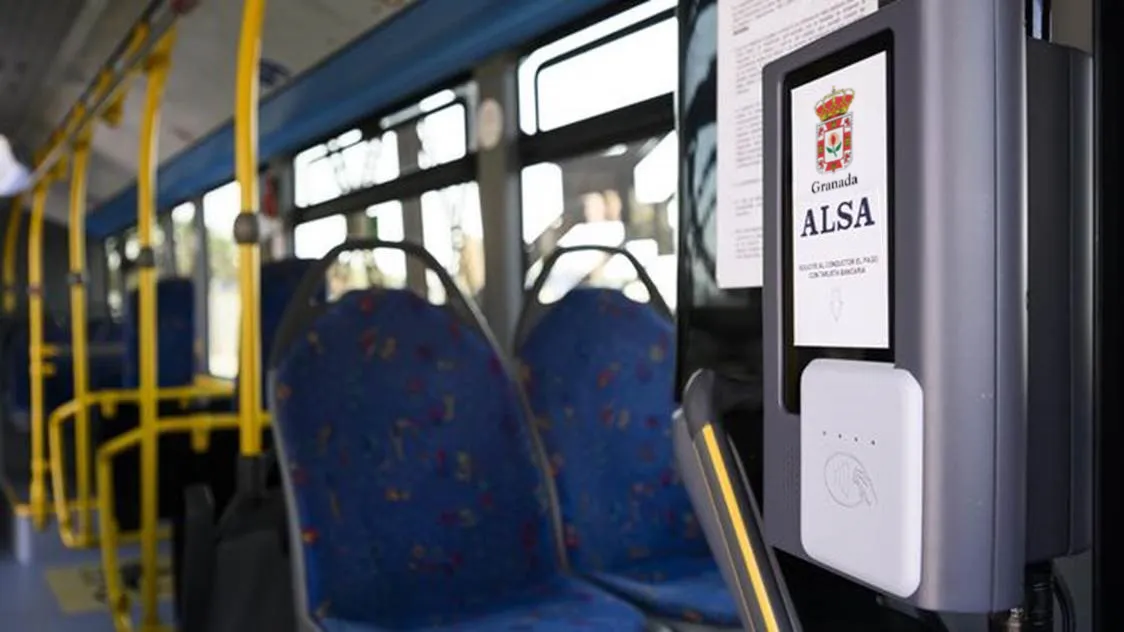Bus passengers in San Bernardino, California now have up-to-the-minute, accurate bus arrival information at their fingertips with bus operator Omnitrans’ new NexTrip technology. Passengers can access NexTrip real-time bus information via mobile web browser, desktop computer, SMS/text, or by calling 1-800-9-OMNIBUS and selecting the NexTrip option. Online, customers can view buses and stops on a route map with real-time tracking. They even can sign up for automatic alerts, such as notification when the bus i
January 22, 2013
Read time: 2 mins
Bus passengers in San Bernardino, California now have up-to-the-minute, accurate bus arrival information at their fingertips with bus operator 7107 Omnitrans’ new NexTrip technology.
Passengers can access NexTrip real-time bus information via mobile web browser, desktop computer, SMS/text, or by calling 1-800-9-OMNIBUS and selecting the NexTrip option. Online, customers can view buses and stops on a route map with real-time tracking. They even can sign up for automatic alerts, such as notification when the bus is five minutes away.
Omnitrans CEO/general manager Milo Victoria was instrumental in bringing the new technology to Omnitrans. “We introduced this in DC, while I was at the Washington Metropolitan Area Transit Authority, and our passengers absolutely loved it. So I promised our board we would implement it at Omnitrans,” he said.
To use NexTrip, customers simply provide their bus stop location information by bus route, direction and intersection or an Omnitrans bus stop number, located on all bus stop signs. GPS-enabled phones can automatically provide information for the closest bus stop. Omnitrans will install new signs with complete NexTrip contact information in mid-2013. The signs will feature a QR code passengers can scan, providing yet another option to access arrival times.
The system uses global positioning system (GPS) tracking satellites and advanced computer modeling developed by Nextbus of California to provide accurate arrival information for all 2,500 bus stops in the Omnitrans fixed route bus system. According to Omnitrans, taking into account the actual location of the buses, their intended stops, and the typical traffic patterns, NexTrip estimates arrivals with a high degree of accuracy.
In 2014, Omnitrans will roll out NexTrip electronic message signs on all twenty-three station platforms on the agency’s sbX bus rapid transit line, now under construction in San Bernardino and Loma Linda. Real-time information signs will also be added to major transfer centers in the Omnitrans system.
Passengers can access NexTrip real-time bus information via mobile web browser, desktop computer, SMS/text, or by calling 1-800-9-OMNIBUS and selecting the NexTrip option. Online, customers can view buses and stops on a route map with real-time tracking. They even can sign up for automatic alerts, such as notification when the bus is five minutes away.
Omnitrans CEO/general manager Milo Victoria was instrumental in bringing the new technology to Omnitrans. “We introduced this in DC, while I was at the Washington Metropolitan Area Transit Authority, and our passengers absolutely loved it. So I promised our board we would implement it at Omnitrans,” he said.
To use NexTrip, customers simply provide their bus stop location information by bus route, direction and intersection or an Omnitrans bus stop number, located on all bus stop signs. GPS-enabled phones can automatically provide information for the closest bus stop. Omnitrans will install new signs with complete NexTrip contact information in mid-2013. The signs will feature a QR code passengers can scan, providing yet another option to access arrival times.
The system uses global positioning system (GPS) tracking satellites and advanced computer modeling developed by Nextbus of California to provide accurate arrival information for all 2,500 bus stops in the Omnitrans fixed route bus system. According to Omnitrans, taking into account the actual location of the buses, their intended stops, and the typical traffic patterns, NexTrip estimates arrivals with a high degree of accuracy.
In 2014, Omnitrans will roll out NexTrip electronic message signs on all twenty-three station platforms on the agency’s sbX bus rapid transit line, now under construction in San Bernardino and Loma Linda. Real-time information signs will also be added to major transfer centers in the Omnitrans system.








